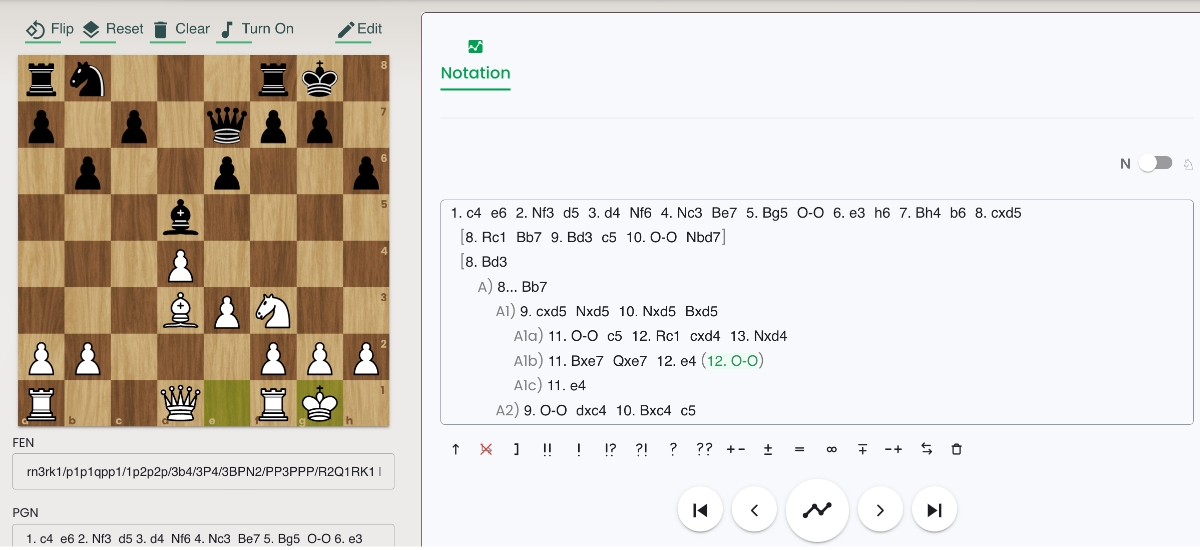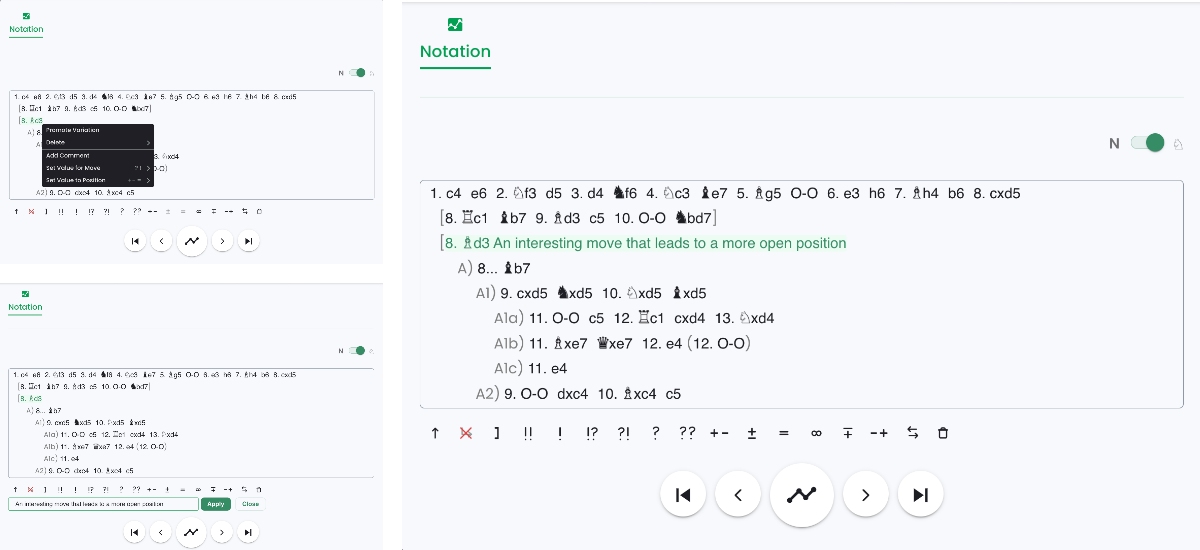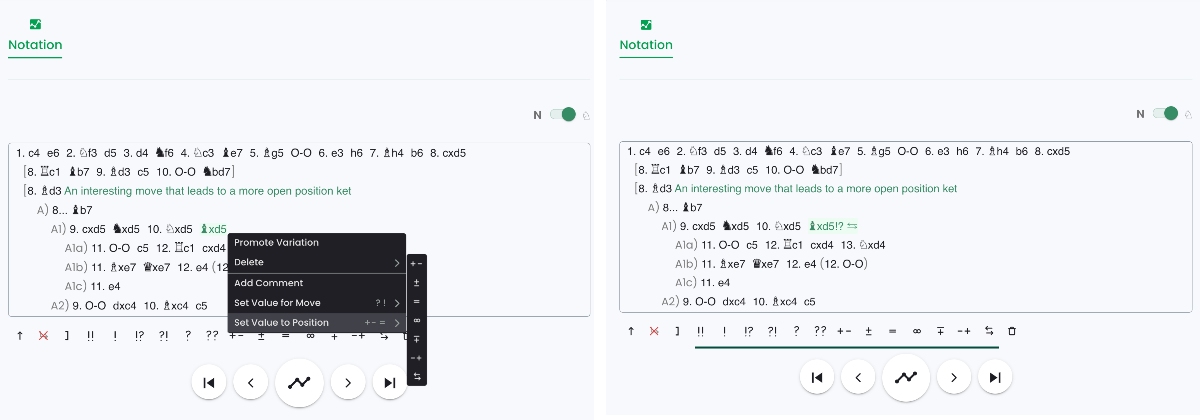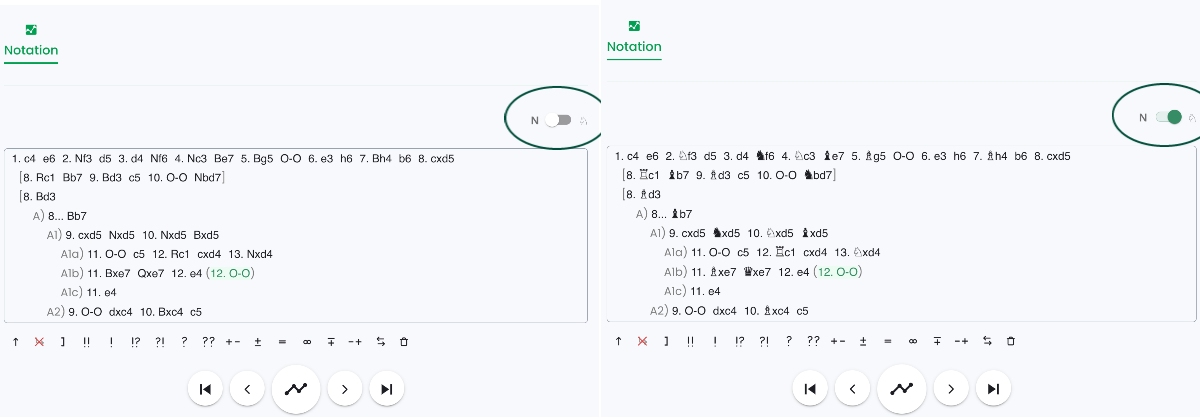
The New Features of Chessify’s Chess Notation
Although the main feature of Chessify has always been (and still remains) chess analyses on powerful cloud servers, we have recently committed to making our online training platform more convenient for chess players. One of our first undertakings was to improve our notation, the final version of which is now available on the Chessify website. And although some minor improvements may come in the future, today we’re happily presenting to you the features of our new chess notation.
1. Add endless variations
The new notation of Chessify now supports as many variations as you need. You can enter multiple possibilities in a given position and even have sub-variations added for each of them. Our new notation will gather all your main lines and variations in a structured chess notation to make it easy for you to navigate through your PGN file, no matter how complex it is. Here’s how the new notation structure looks in practice:

2. Add commentary
The ability to add notes and comments in a game has been one of the most requested features of our users. You can simply right-click on a given move and choose "Add Comment" to write down any important notes. In case you decide to delete the comments, you can right-click on the move, hover over the "Delete" option, and then choose "Delete Move Comments."

3. Assign values to moves or positions
The bottom line of the notation shows all the values that you can assign to a particular move or position. The values in the first half ( up until the +- sign) relate to the quality of a move, while the rest of them indicates the evaluation of the given position. By hovering over each value, you’ll be able to see their meaning to help you use them accordingly. You may also access the same values by right-clicking on a move and choosing one of the last two options: "Set value for move" or "Set Value to Position."

4. Choose between standard and figurine algebraic notation
The standard chess notation uses the first letters of the chess pieces' names in English (K, Q, R, B, N). However, many players, especially those who haven't participated in international tournaments, often have a hard time reading and understanding the notation in English. To solve this problem, Chessify allows you to choose whether you want to see the notation in English or in chess piece symbols. You can use the toggle on the top right corner of the notation to switch between the two styles.

We hope that our new notation features accommodate your chess training and analysis. You can sign up on chessify.me/analysis to get access to the new notation as well as to unlimited analysis with 1,000 kN/s Stockfish for free.



